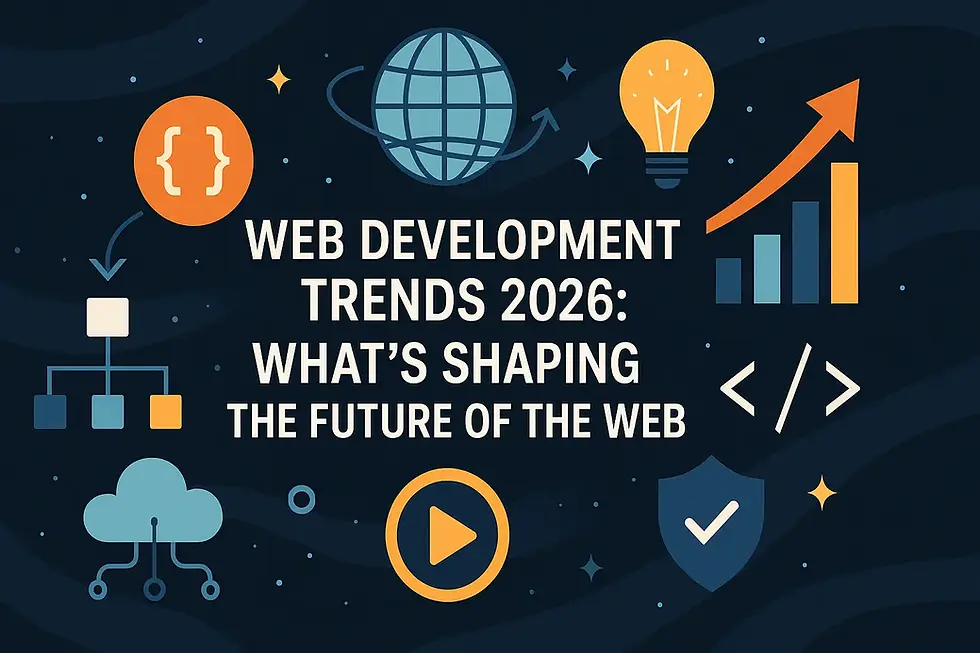The Future of Web Design: Personalization Through AI Avatars
- Davydov Consulting

- Aug 21
- 6 min read

Remember the early days of the internet? We navigated a sea of static, text-heavy pages that felt more like digital brochures than living spaces. Fast forward to today, and web design has completely transformed. It’s no longer just about building a pretty portfolio; it’s about creating an experience that truly connects with people.
The biggest shift isn’t just about aesthetics. For the first time, we're moving beyond what looks cool and asking a more important question: what do people actually want from a website?
Modern design isn't about impressing other designers. It’s about solving real problems for real people in a way that feels effortless. Every project is a blend of art and science, creativity and function. And frankly, the most exciting conversations we have now aren't about fonts or color palettes, but about how to make a site more intuitive, engaging, and genuinely useful.
Technologies like artificial intelligence are fueling this change, giving us the tools to build online experiences that feel less like code and more like a conversation. This is where the future is headed: a design philosophy that puts people, not pixels, at the center of everything.
It means looking past the surface to understand what someone truly needs. When we get that right, we build websites that are beautiful, easy to use, and grounded in a little thing called empathy. It’s a constant loop of testing, learning, and refining until the final product just works. That’s when web design becomes more than a job—it becomes a way to make the digital world a little more human.
Putting People Back in the Picture

Ever landed on a website and felt completely lost? Or worse, felt like it was designed by robots, for robots? That’s what happens when we forget the golden rule: design for other people, not for ourselves.
It’s the most common trap in the industry: designers creating slick, minimalist sites that win awards but leave everyday users confused. Human-centered design flips that script. It’s a simple philosophy that says, "Let's understand people first, then build things for them."
The secret is to get to know your audience—their goals, their frustrations, and the world they live in. When a website speaks your language and anticipates your next move, it feels less like a tool and more like a helpful friend. It’s not about pushing features; it’s about meeting needs.
Here are the non-negotiables for getting it right:
Making Sure Everyone's Invited (Accessibility): Accessibility isn't a feature; it's a fundamental right. A website that isn’t usable by people with disabilities is a closed door. I’ve seen businesses lose customers simply because they treated accessibility as an afterthought. It’s about creating a space where everyone feels welcome.
Speaking Everyone's Language (Inclusivity): This goes beyond accessibility. It’s about recognizing that your audience is a mix of different cultures, backgrounds, and languages. Connecting with a Gen Z audience in Southeast Asia, for instance, requires a completely different approach than reaching older demographics in Europe. It might mean running a highly localized campaign with a creative TikTok ad agency in Bangkok to create content that feels authentic and culturally relevant.
Don't Make Me Think (Intuitive Navigation): Good design is invisible. It guides you where you need to go without you even noticing. When a site's layout makes sense, people stick around, find what they’re looking for, and are far more likely to click that "buy" or "contact" button.
A Website That Knows You, Powered by AI
Artificial intelligence is no longer sci-fi; it's the engine behind the most personal and intuitive websites today. Think of it less as automation and more as a way to create a genuine connection at scale.
Tools like InVideo’s AI avatar generator are allowing brands to have face-to-face interactions that feel authentic, not automated. It’s a glimpse into a future where technology doesn’t replace humanity—it enhances it.
Here’s how AI is making the web feel like it was built just for you:
A Personal Welcome, Every Time: AI is like a great barista who remembers your usual order. It looks at your browsing history or past purchases and instantly serves up content and recommendations you’ll actually care about. No two people get the exact same experience, because every interaction is tailor-made.
Learning What People Actually Want: AI is brilliant at spotting patterns in how people use a website. It gives designers real-world data on what’s working and what isn’t. This means we can stop guessing and start making smarter decisions based on evidence, leading to better designs over the long run.
A Site That Adapts on the Fly: With AI, a website can change its layout or content in real time based on your behavior. A virtual assistant can pop up with the right answer to your question before you even finish typing. The site learns from you, getting smarter and more helpful with every visit.
More Than a Chatbot: Meet Your Digital Ambassador
Let's be honest: most chatbots are frustrating. They’re scripted, clunky, and rarely understand what we need. AI avatars and digital humans are about to change that forever.
The biggest mistake a business can make is treating these avatars like a fancier FAQ page. Their true power isn't in reciting answers; it's in building relationships.
Powered by smart technology, these avatars can understand context, interpret tone, and learn from every conversation. They can even anticipate what you might need next, offering help before you have to ask. Suddenly, the avatar transforms from a simple tool into a trusted guide. Imagine an avatar helping you pick the perfect outfit, walking you through a complicated medical form, or just being a friendly face in a sea of text.
The result is an experience that feels less like a transaction and more like a human connection. Businesses that get this right won’t just improve their customer service—they’ll earn loyalty and build a brand that people genuinely love.
To manage this personalized outreach at scale, many companies now rely on a specialized virtual assistant digital marketing agency to handle the detailed work of customer engagement and campaign execution.
From Transactions to Trust
In a world full of digital noise, trust is everything. We no longer want to feel like another number in a database; we want brands to see us, understand us, and treat us like individuals.
A generic, one-size-fits-all approach just doesn’t work anymore. This is where personalized support from AI avatars shines. By understanding your history with a brand, they can provide advice that feels thoughtful and specific to you. It’s the difference between a canned response and a real conversation.
This builds confidence. When you feel seen and heard, you start to trust the brand behind the screen. And that trust is reinforced by security. AI also plays a role here, helping to verify identities and keep your information safe.
Ultimately, it’s about turning a simple visit into a lasting relationship. When support adapts to you, you’re not just a customer—you’re an advocate.
Bridging the Gap Between Screen and Reality with AR

Augmented reality (AR) is taking everything we’ve just talked about and pulling it out of your screen and into your living room. Imagine trying on a pair of sneakers virtually or seeing how a new sofa would look in your space before you buy it.
Now, add an AI avatar to that experience. Suddenly, you have a friendly guide in your room with you, demonstrating how the product works, answering your questions, and offering personalized recommendations. This turns online shopping from a passive scroll into an active, engaging experience.
AR makes the digital world feel tangible, and AI avatars make it feel personal. It's a powerful combination that helps people make decisions with confidence and creates a "wow" moment that they won't forget.
With Great Power Comes Great Responsibility
These new technologies are exciting, but they also come with a huge responsibility. AR, VR, voice interfaces, and even emotion recognition tools are incredibly powerful. They can create amazing experiences, but they also collect a lot of data.
Protecting user privacy and being transparent about how we use that data isn't just a legal requirement; it’s a moral one. We have to design ethically. That means being honest, securing data, and never using design to manipulate people.
The goal is to use innovation to make life better without compromising a user's trust. We as designers and developers are the gatekeepers. It’s on us to ensure that as technology gets smarter, it also gets more thoughtful and more responsible.
The Future is Human
In the end, the future of web design isn’t a battle between technology and humanity. It’s about finding the perfect blend of both. The websites that will win our hearts won't just be the ones that look the best; they’ll be the ones that feel the most human.
The formula is simple:
Listen First: Spend time understanding what people actually need.
Work Together: Bring designers, developers, and strategists together from day one.
Never Stop Learning: Use feedback and testing to constantly make things better.
As technology continues to evolve, the tools at our disposal will become even more incredible. But our guiding principle should remain the same: design for people. The future isn't just about smarter technology; it's about a more human connection.




Comments